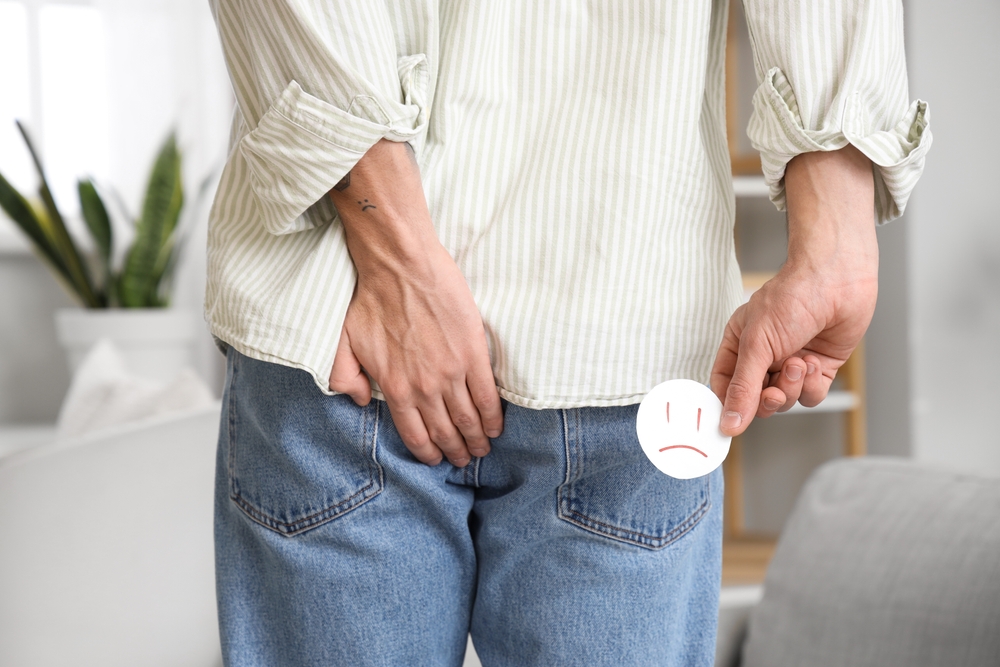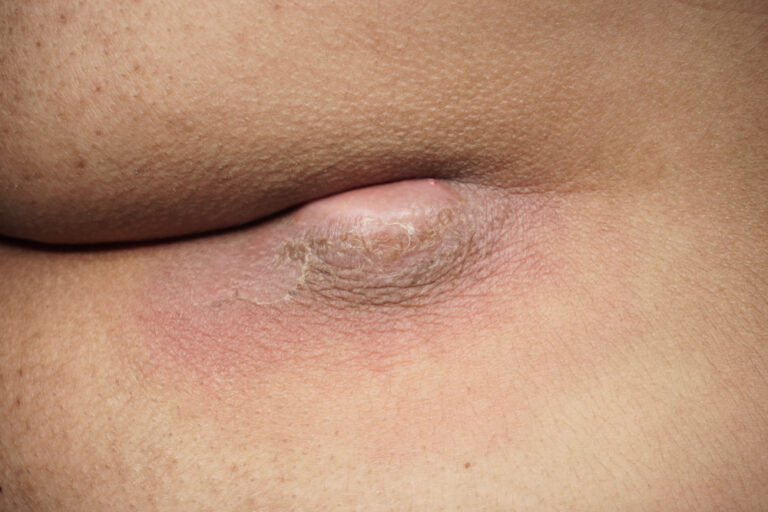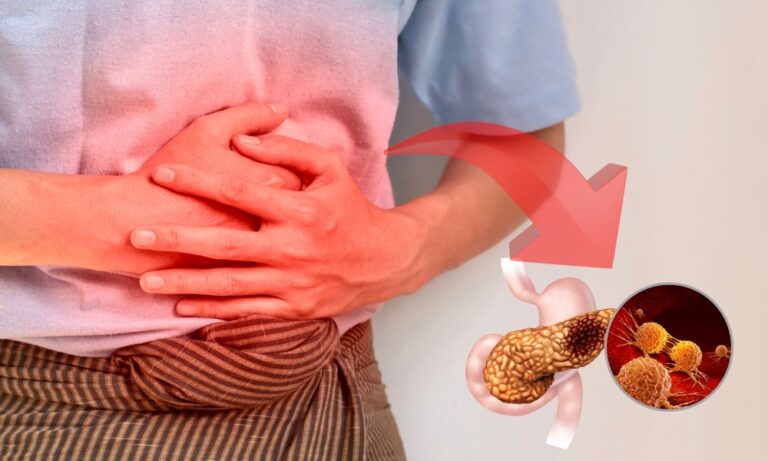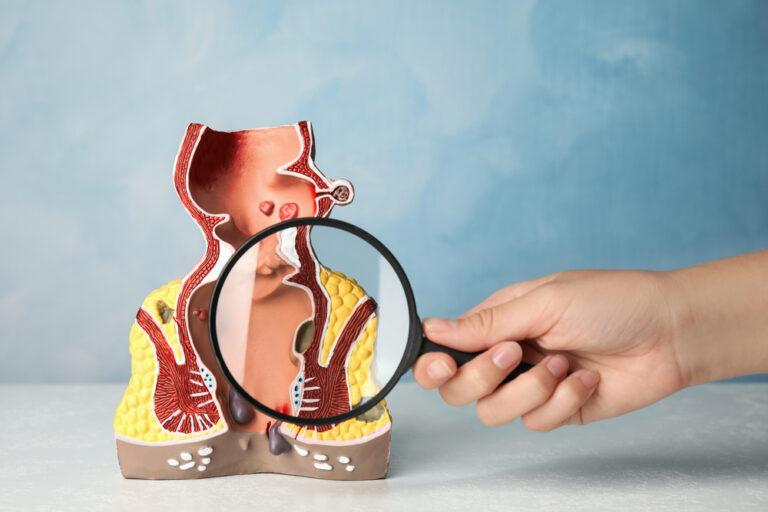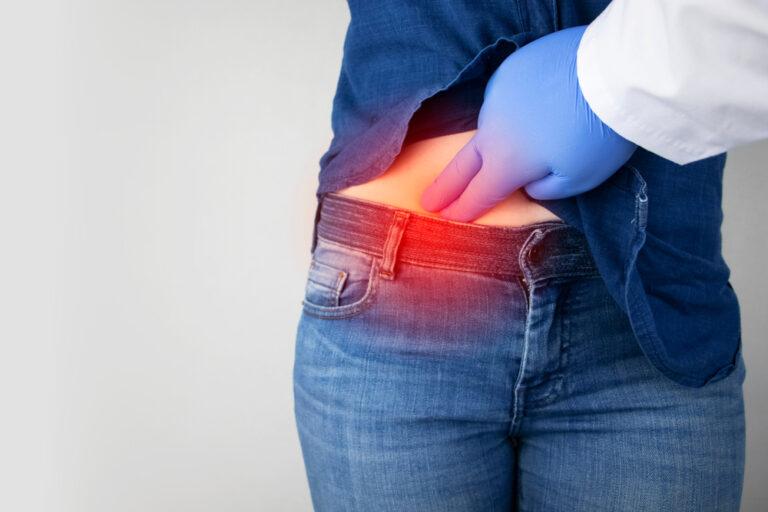What Is Anal Fissure?
An anal fissure is a small tear or cut in the lining of the anus, which causes severe pain, burning, and bleeding during or after passing stool.
It is one of the most common and painful anorectal conditions that affects both men and women of all ages.
Anal fissures usually occur due to passing hard stools, chronic constipation, straining, or prolonged diarrhea.
They can be acute (recent) or chronic (long-standing) — chronic fissures often have a visible skin tag or a sentinel pile near the tear.
Causes of Anal Fissure
- Chronic constipation or hard stool
- Prolonged diarrhea
- Straining during bowel movements
- Childbirth trauma in women
- Tight anal sphincter muscles
- Inflammatory bowel diseases
Common Symptoms
- Sharp pain during and after defecation
- Burning sensation in the anal area
- Bright red bleeding with stool
- Itching or irritation around the anus
- Visible crack or cut near the anal opening
- Difficulty in sitting due to pain
Investigations for Anal Fissure
A clinical diagnosis is usually made through a physical examination, but the doctor may recommend additional tests to rule out other conditions like piles or fistula.
1. Visual Inspection
The doctor examines the anal area to check for the tear, skin tag, or inflammation.
2. Digital Rectal Examination (DRE)
Performed gently (if tolerable) to assess muscle tightness or internal fissure.
3. Anoscopy or Proctoscopy
A small instrument is used to visualize the anal canal and confirm the diagnosis.
4. Colonoscopy (if needed)
Recommended in patients over 40 or with unexplained rectal bleeding to exclude other diseases.
Treatment Options for Anal Fissure
Treatment depends on whether the fissure is acute or chronic.
1. Conservative Management (Initial Stage)
- High-fiber diet and plenty of fluids
- Stool softeners to prevent straining
- Warm sitz baths for 10–15 minutes daily
- Topical ointments or creams (to relax the sphincter and heal the tear)
These measures help in most acute cases.
2. Surgical Treatments for Chronic Fissure
When conservative therapy fails, surgical treatment is required for permanent relief.
a. Lateral Internal Sphincterotomy (LIS)
The surgeon makes a small cut in the internal anal sphincter to reduce muscle spasm and promote healing.
Although effective, it carries risks like bleeding or minor incontinence.
b. Botox Injection
Temporarily relaxes the sphincter muscles, allowing the fissure to heal. However, recurrence is possible.
c. Laser Sphincterotomy / Laser Fissure Surgery – The Modern Solution
The latest and most effective treatment for chronic anal fissure is Laser Surgery.
It is a painless, bloodless, and daycare procedure that provides permanent relief without any major side effects.
Best Treatment – Laser Surgery for Anal Fissure
Laser fissure surgery is a minimally invasive procedure where a controlled laser beam is used to:
- Relieve sphincter spasm
- Stimulate blood flow
- Promote healing of the fissure
Advantages of Laser Treatment:
- Painless and bloodless procedure
- No cuts or stitches
- Short hospital stay (day-care procedure)
- Quick recovery – resume work within 24–48 hours
- Minimal risk of recurrence
- No risk of incontinence
- Excellent cosmetic results
Why Choose Laser Fissure Treatment?
Laser surgery has revolutionized the treatment of anorectal diseases.
It ensures:
- Maximum precision with minimal tissue damage
- Fast healing and minimal post-operative discomfort
- Low infection risk and better patient satisfaction
Laser fissure surgery is the preferred choice for patients who want safe, effective, and long-lasting relief from chronic anal fissure.
Conclusion
An anal fissure can cause intense pain and disrupt daily life, but with modern medical advancements, it can be treated safely and permanently.
Among all available options, Laser Fissure Surgery stands out as the best, most advanced, and painless solution for quick recovery and complete cure.
If you’re suffering from anal fissure, don’t delay — consult a qualified laser proctologist for early diagnosis and treatment.

